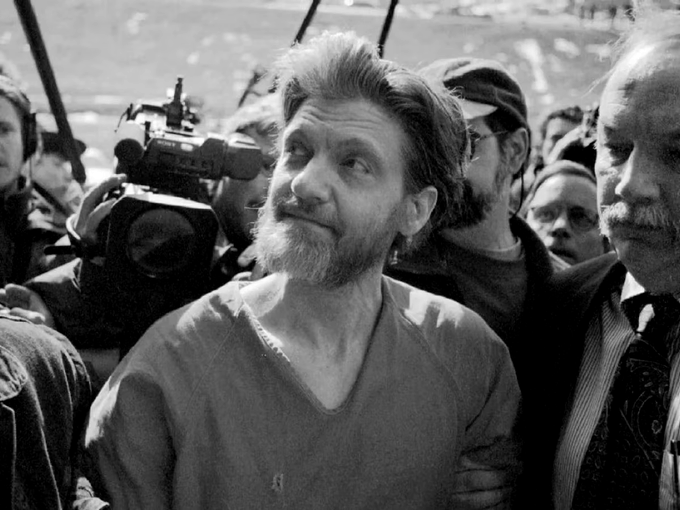Theodore John Kaczynski, also known as the Unabomber, was a domestic terrorist who carried out a series of bombings between 1978 and 1995. His targets included universities, airlines, and individuals, resulting in injuries, deaths, and widespread fear. On April 3, 1996, Kaczynski was arrested at his remote cabin near Lincoln, Montana. Let’s take a closer look at the timeline of the Unabomber’s bombings and the subsequent events that unfolded.
1978-1980
Kaczynski’s bombing spree began on May 25, 1978, at Northwestern University in Evanston, Illinois, where he injured campus police officer Terry Marker. This marked the start of his terror campaign that lasted for nearly two decades.
The following year, on May 9, 1979, Kaczynski targeted graduate student John Harris at Northwestern University with a bomb, demonstrating his intent to cause harm.
The Unabomber’s third known bombing took place on November 15, 1979, targeting American Airlines Flight 444 between Chicago and Washington. Fortunately, the bomb did not cause any injuries or deaths among the twelve people on board.
The fourth bombing occurred on June 10, 1980, in Lake Forest, Illinois, where Kaczynski seriously injured United Airlines executive Percy Wood in his home. This incident highlighted the indiscriminate nature of the attacks, as the victims came from different backgrounds.
Also Read: Who is David Kacyznski, brother of Unabomber Ted Kacyznski
1981-1982
On October 8, 1981, a bomb was discovered at the University of Utah, but it was successfully defused. This incident sparked heightened concern and increased security measures at educational institutions.
The Unabomber’s sixth victim was Janet Smith, a secretary at Vanderbilt University in Nashville, Tennessee. She suffered burns and shrapnel wounds from the bomb on May 5, 1982, causing fear and unrest within academic communities.
The seventh bombing took place on July 2, 1982, at the University of California, Berkeley, injuring engineering professor Diogenes Angelakos. This further fueled the investigation and created a sense of vulnerability on campuses.
Also Read: Who was Ted Kaczynski, “Unabomber” who attacked modern life found dead in prison at 81
1985-1987
Kaczynski struck again on May 15, 1985, at the University of California, Berkeley, injuring graduate student John Hauser. The mounting fear and urgency to identify and apprehend the Unabomber grew with each attack.
On June 13, 1985, a bomb was found at a Boeing aircraft manufacturing facility in Auburn, Washington, and successfully defused. This event underscored the Unabomber’s ability to penetrate secure locations.
The tenth bomb injured University of Michigan psychology professor James McConnell and research assistant Nicklaus Suino on November 15, 1985, targeting academic professionals and impacting the psychological well-being of the academic community.
December 11, 1985, marked a turning point as Kaczynski’s eleventh bomb killed Sacramento computer store owner Hugh Scrutton. This tragedy escalated the urgency to apprehend the Unabomber.
On February 20, 1987, a bomb was left in the parking lot of a Salt Lake City computer store, but it did not cause any injuries or fatalities, further heightening fear and uncertainty.
Also Read: Who is Linda Patrik, Ted Kaczynski’s sister-in-law and first person to identify him as the Unabomber
1993-1995
The thirteenth bomb, sent on June 22, 1993, targeted computer science professor David Gelernter at Yale University, emphasizing the Unabomber’s ability to strike even prestigious institutions.
The fourteenth bomb, placed in the North Caldwell home of timber industry lobbyist Gilbert Brent Murray on December 10, 1994, resulted in Murray’s death, marking a significant escalation in the Unabomber’s actions.
The fifteenth and final bomb, planted in the parking lot of an office building in Sacramento, California, on April 24, 1995, targeted California Forestry Association president Gilbert P. Murray and caused his death. This bombing brought an end to the Unabomber’s reign of terror.
Arrest and Trial
On April 3, 1996, Kaczynski was arrested at his remote cabin in Lincoln, Montana, following an extensive investigation led by the FBI. His arrest came after the publication of his manifesto, known as the “Unabomber Manifesto,” in major newspapers. Kaczynski’s brother recognized the writing style and alerted the authorities, leading to his capture.
In January 1998, Kaczynski’s trial began in Sacramento, California. He faced numerous charges related to the transportation, mailing, and use of bombs that caused injuries and deaths. Initially pleading not guilty, Kaczynski later changed his plea to guilty in exchange for a life sentence without the possibility of parole. On May 4, 1998, he was formally sentenced and incarcerated at the ADX Florence supermax prison in Colorado.
The bombings carried out by Ted Kaczynski, the Unabomber, left a lasting impact on the victims, their families, and society as a whole. His acts of terrorism instilled fear and prompted a nationwide manhunt. The Unabomber case stands as a chilling reminder of the devastating consequences of domestic terrorism and the importance of vigilance and swift action in safeguarding public safety.







